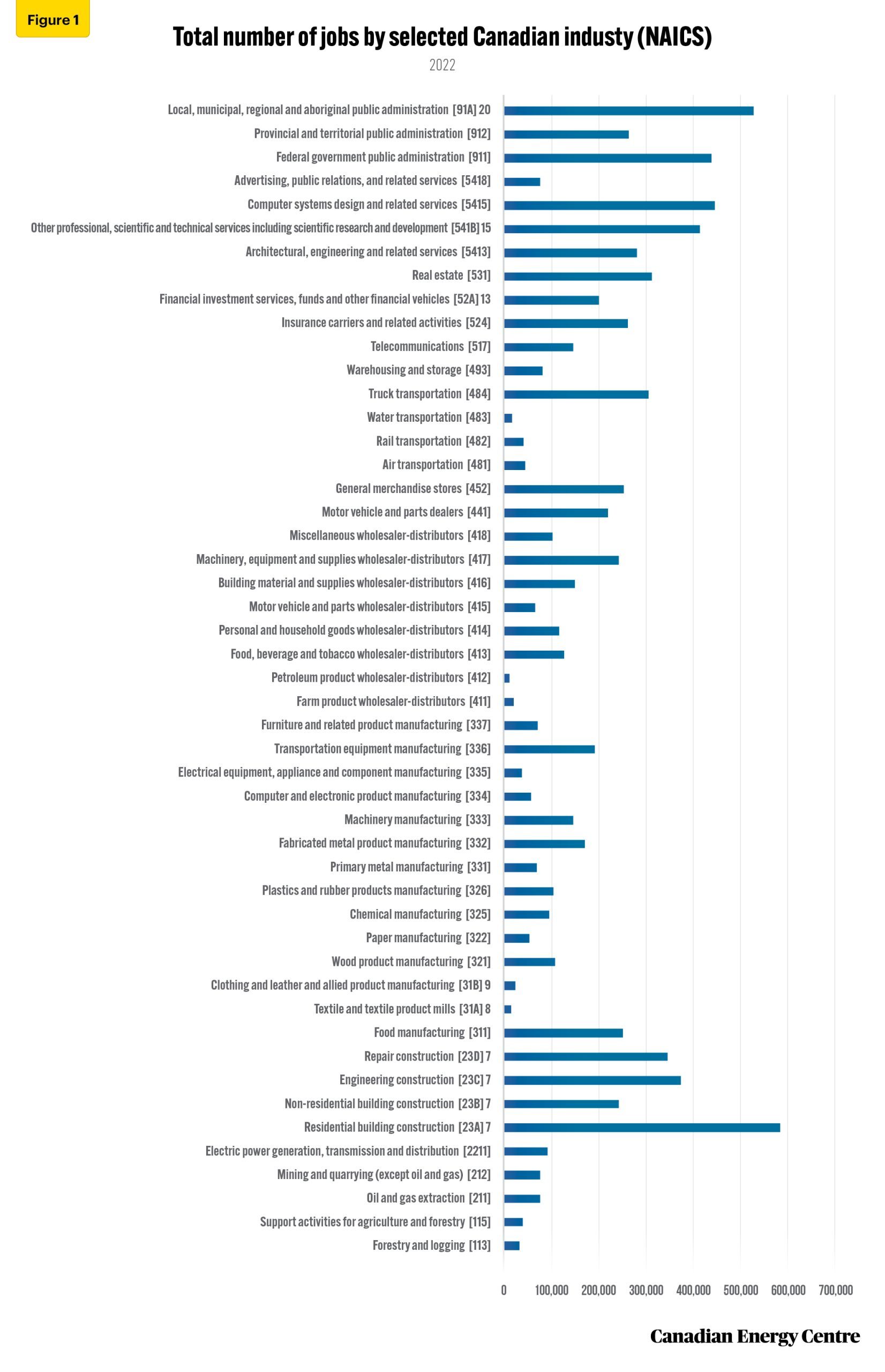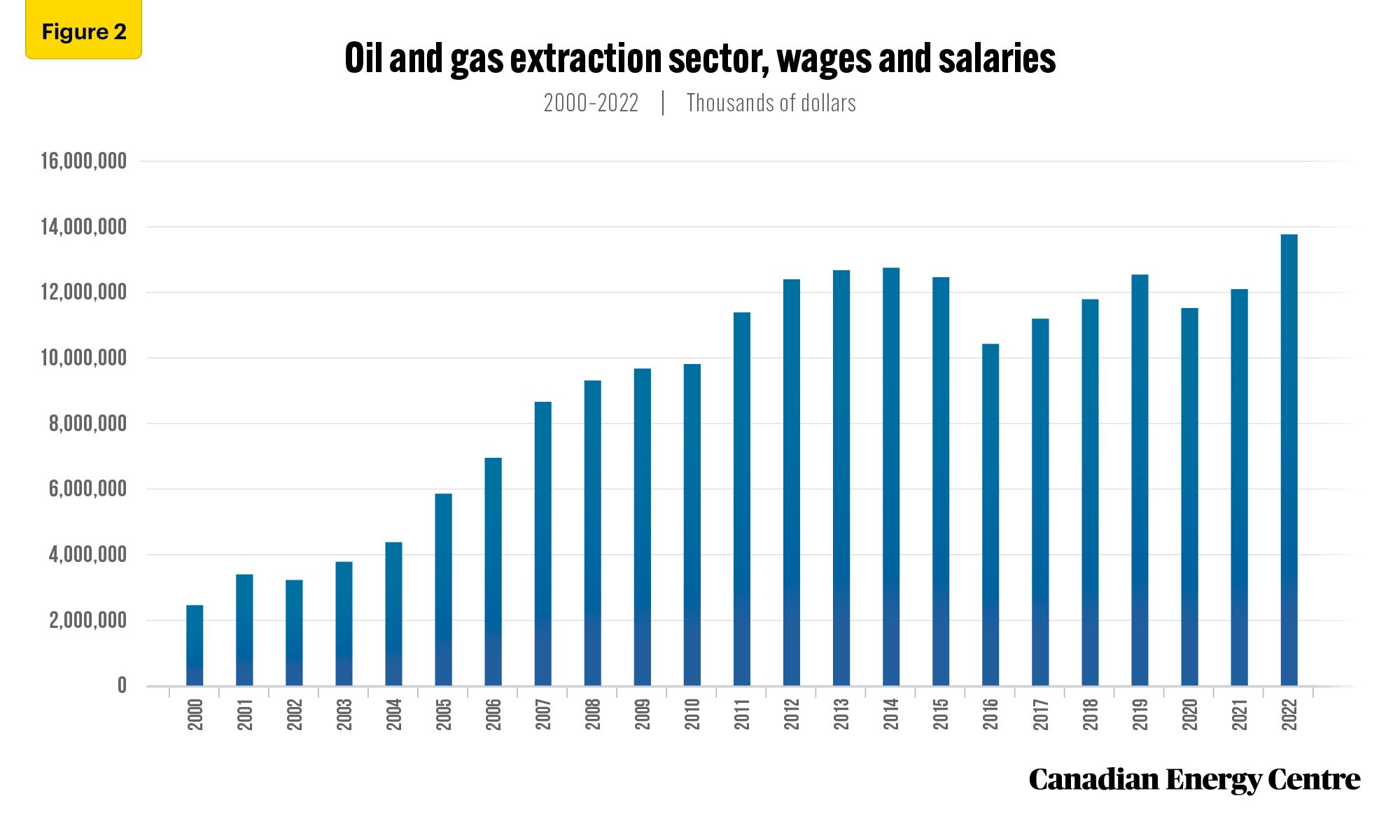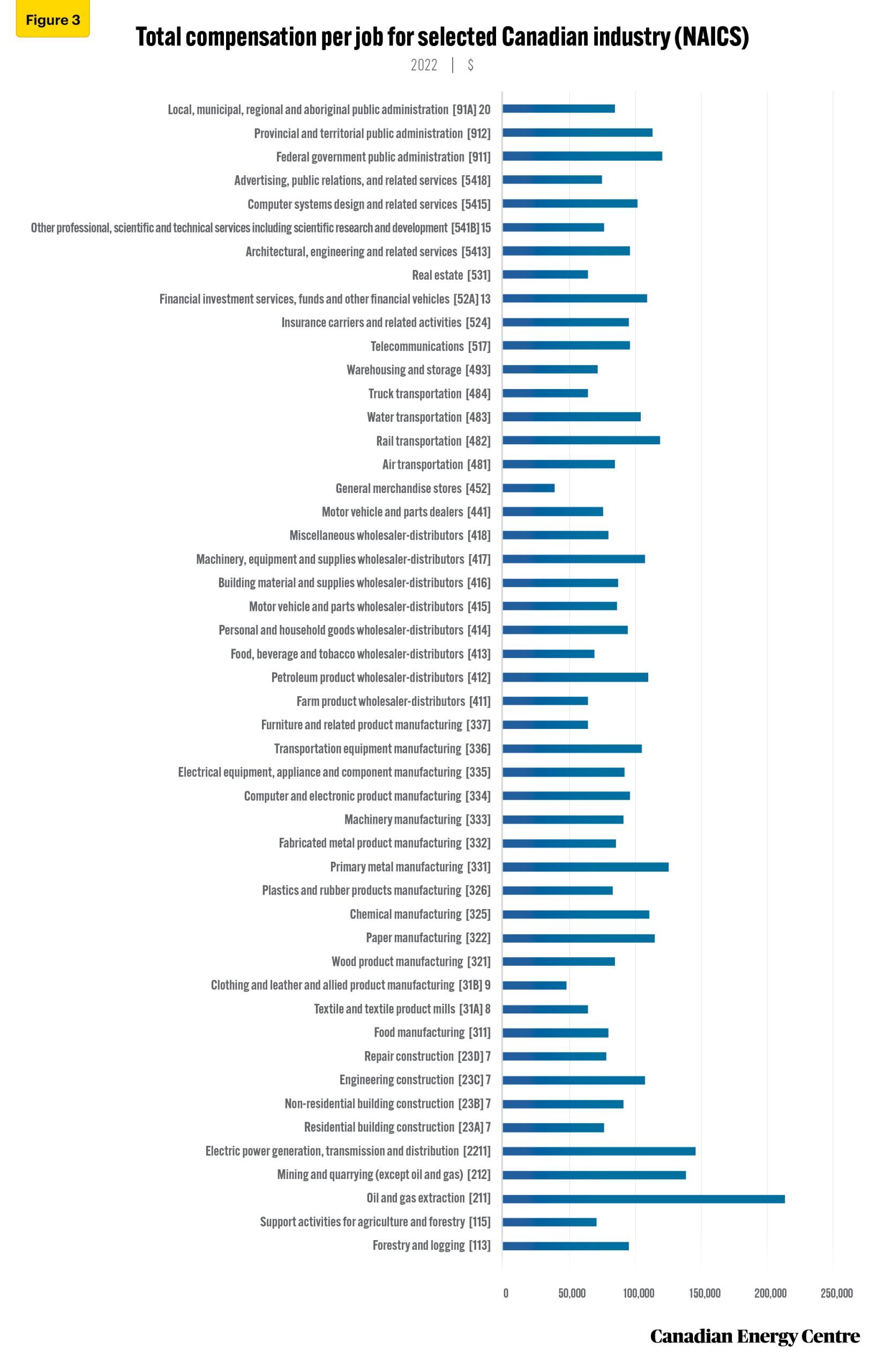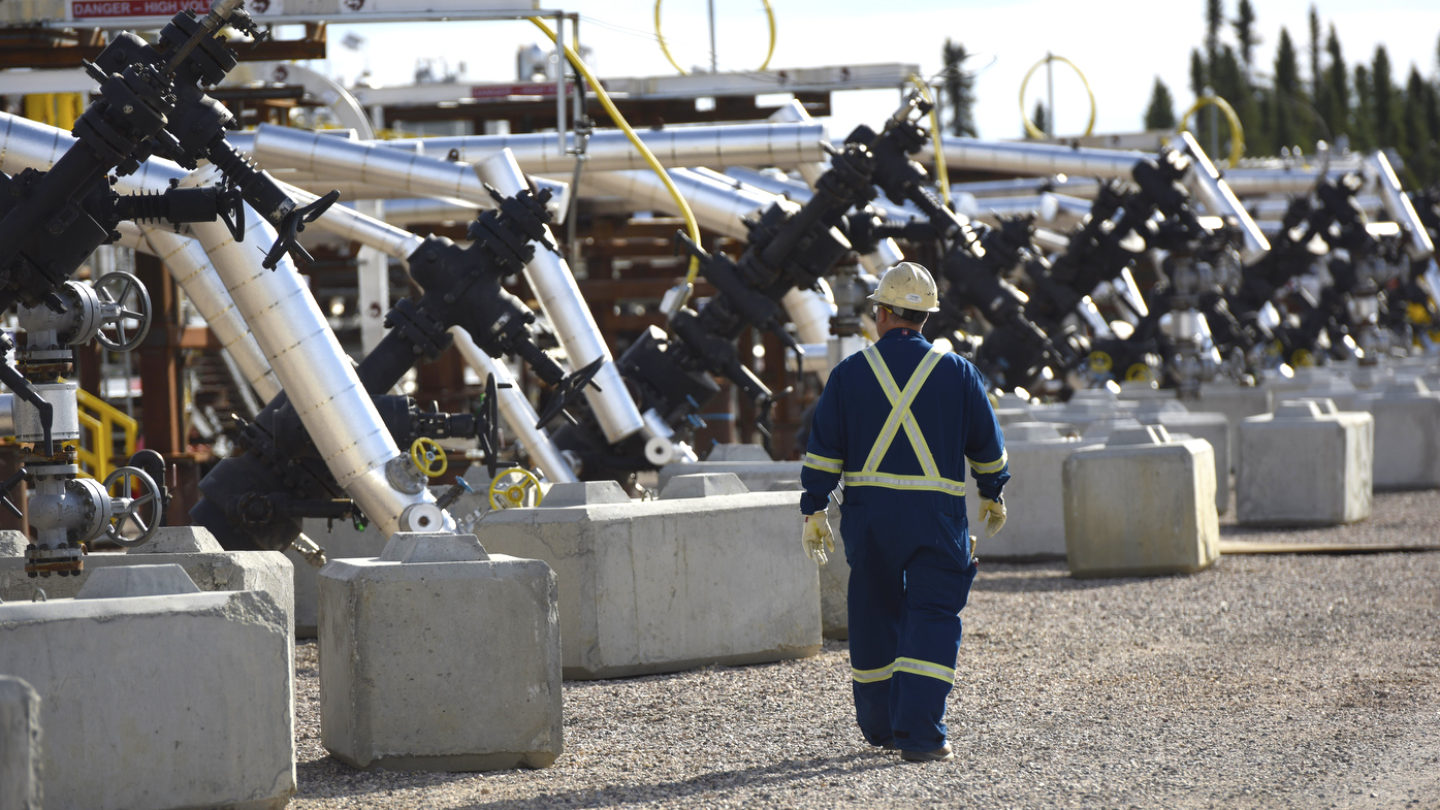To sign up to receive the latest Canadian Energy Centre research to your inbox email: research@canadianenergycentre.ca
Download the PDF here
Download the charts here
Introduction
In this CEC Fact Sheet, we examine key labour compensation data for Canadian workers directly employed in the oil and gas sector extraction sector in 2022 and compare this data with that from other key sectors in Canada.
For the purposes of our research, we define the oil and gas extraction sector in Canada as establishments engaged primarily in operating oil and gas field properties. This includes the production and extraction of oil from oil shale and oil sands but does not include support activities for the oil and gas sector.
Analysis
The oil and gas extraction sector in Canada directly employed 76,185 workers in 2022, the highest total number of jobs in the sector since 2019 (see Figure 1).
This covers both salaried workers jobs and those who are self-employed.

Source: Statistics Canada, 2023
Oil and gas extraction sector wages and salaries totalled nearly $13.8 billion in 2022
Wages and salaries in the oil and gas extraction sector equalled nearly $13.8 billion in 2022, surpassing the previous peak of $12.8 billion in 2014 (see Figure 2). The $13.8 billion in wages and salaries in 2022 represents an increase of nearly 5.8% from the previous year.
Between 2000 and 2022, cumulative wages and salaries paid in Canada’s oil and gas extraction sector were over $212.8 billion.

Source: Statistics Canada, 2023
Compensation in the oil and gas extraction sector reaches $214,935 per job in 2022, the highest among selected Canadian industries
The total per job compensation in the oil and gas extraction sector is defined as the ratio of the total compensation paid for all jobs in the sector and the total number of jobs in the sector.
Despite having a lower job complement of workers than other industries in Canada, the total compensation paid for the oil and gas extraction sector, at $214,935 per job in 2022, represents an increase of 15.6 per cent over 2021, and is higher by far than other industries in Canada (see Figure 3).
For comparison, the 2022 per job compensation in other industries 2022 include:
- Electric power generation, transmission and distribution ($146,119):
- Primary metal manufacturing ($125,949);
- Rail transportation ($119,315);
- Financial investment services, funds and other financial vehicles ($109,525);
- Mining and quarrying (except oil and gas) ($139,217);
- Residential building construction ($76,864);
- Non-residential building construction ($91,222); and
- Paper manufacturing ($115,458).
In all these industries, the per job compensation in 2022 was far lower than in the oil and gas extraction sector.

Source: Statistics Canada, 2023
Conclusion
The oil and gas extraction sector in Canada is a strong performer when it comes to providing exceptionally good compensation to the labour it employs.
The sector generated nearly $13.8 billion in salaries and wages in 2022 and, at $214,935 that year, total per job compensation is far higher than in other selected Canadian industries.
Notes
This CEC Fact Sheet was compiled by Lennie Kaplan at the Canadian Energy Centre (www.canadianenergycentre.ca). The author and the Canadian Energy Centre would like to thank and acknowledge the assistance of Philip Cross and two anonymous reviewers in reviewing the original data and research for this Fact Sheet.
Reference (as of June 19, 2023)
Statistics Canada (2023). Table 36-10-0489-01: Labour statistics consistent with the System of National Accounts (SNA), by job category and industry. <https://bit.ly/3W2kqsa>
Creative Commons Copyright
Research and data from the Canadian Energy Centre (CEC) is available for public usage under creative commons copyright terms with attribution to the CEC. Attribution and specific restrictions on usage including non-commercial use only and no changes to material should follow guidelines enunciated by Creative Commons here: Attribution-NonCommercial-NoDerivs CC BY-NC-ND.
